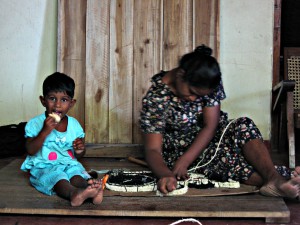My ignorance knows no bounds, I’m pleased to say. Coconut wood, for example: I had no idea it was of any value. But a recent note alerted the Google coconut group to news of a project, funded by Australia, to develop “high quality veneer and veneer products from senile coconut trees in some Pacific island countries”.
Senile is their term, obviously, not mine. I’m far too sensitive to think that just because a coconut palm is 70 years old it is senile. The fact is, however, that old coconuts are not as prolific as youngsters, and may be worth more as timber than as a source of nuts. Certainly the wood looks very pretty, and Carey Smoot, the bloke who developed the industry sounds like quite a card.

What interested me about the story was the fuss it stirred up among coconut nuts. The big worry is how the smallholders who rely on coconuts as the foundation of their livelihoods would respond to buyers with big bucks. Top dollar now for an old tree might be irresistible; would the sellers replant? If not, what will they do when they’ve spent the cash? And, of course, are there other products, besides timber and commodity-priced coconuts, that would boost their incomes sustainably?
Indeed, people called the sustainability of the entire senile coconut timber project into question, and it was a comment in that discussion that really caught my eye.
it goes without saying of course that you DO NOT take more trees than can re grow sustainably otherwise you cut your throat so to speak … and deforestation of coconuts could be irreversible.
Actually, taking more trees than can regrow is exactly what you do do, if you are a normal, for-profit economic entity, especially when the growth rate of the trees is lower than the discount rate you use to decide among alternative investments. The point was made ages ago, largely in relation to fisheries, but is still not widely appreciated. In fact, the role of the discount rate in determining economic behavior is pretty much under-appreciated everywhere.
If you’ve got a great big gob of capital waiting to be put to work, you chop down and convert all the senile coconut palms you can, until that’s no longer profitable, and then you invest your much larger chunk of capital in something equally unsustainable, like whaling. Or intensively cultivated farmland.